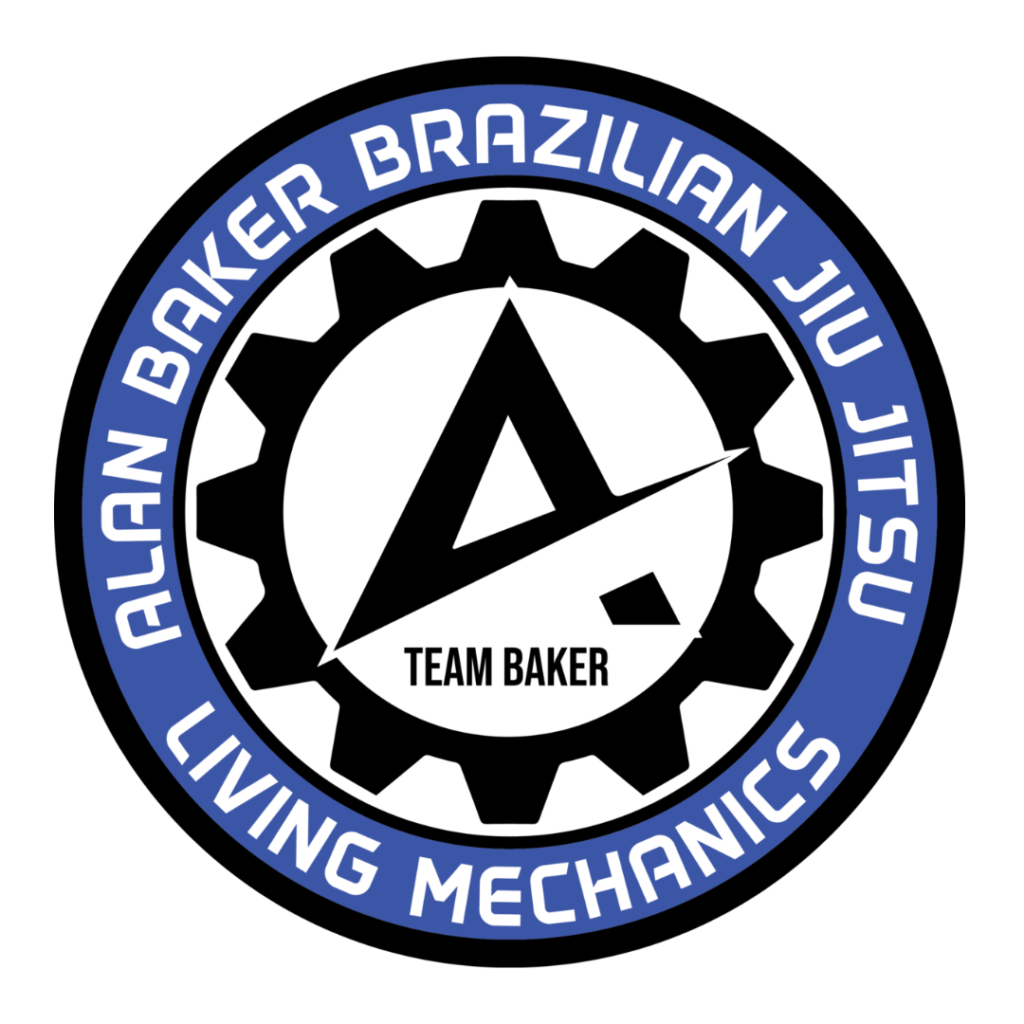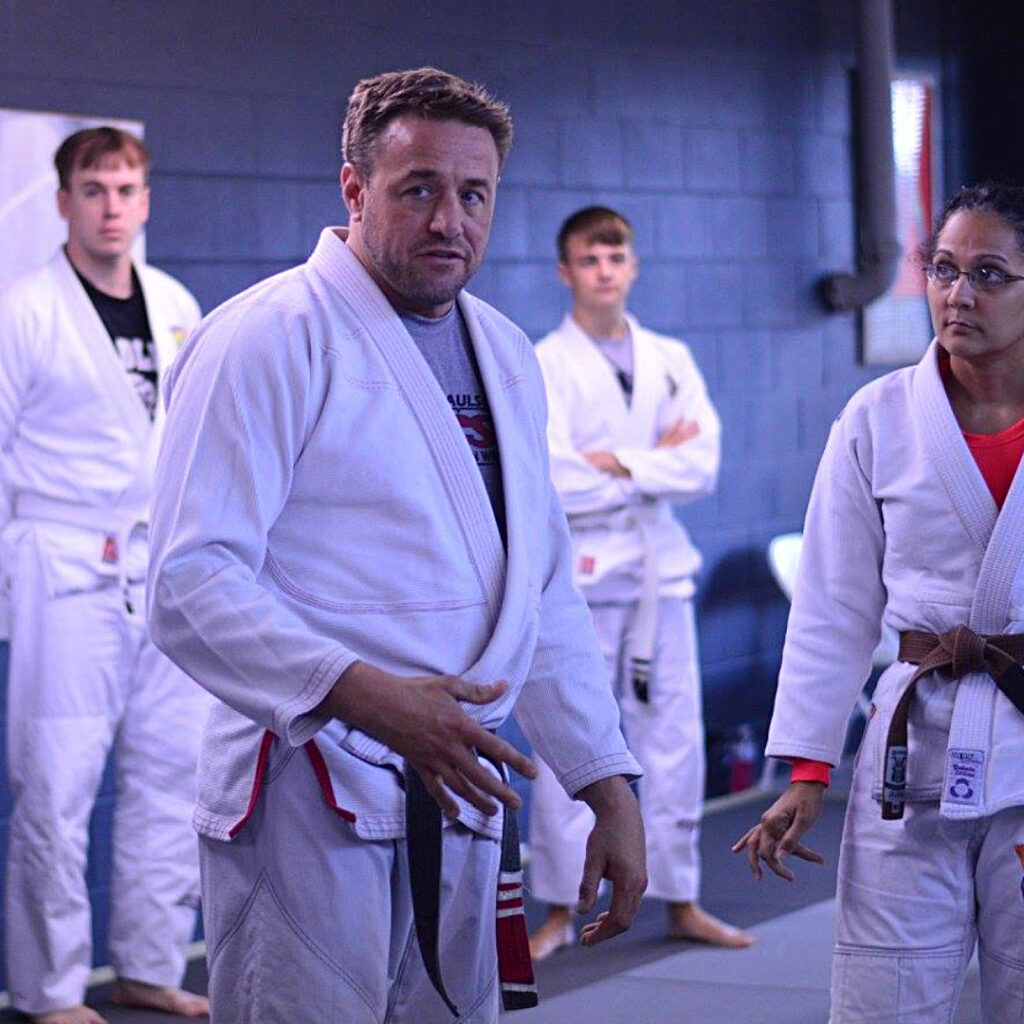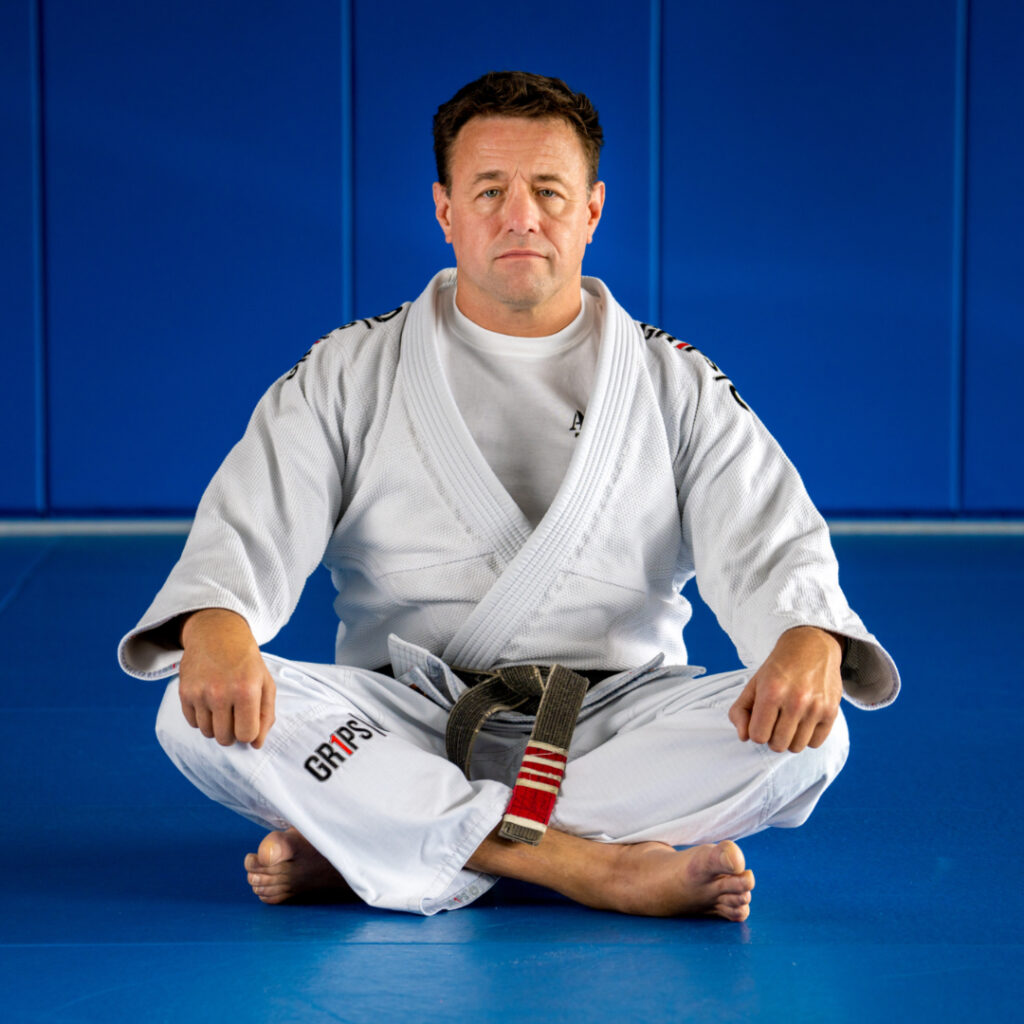Living Mechanics Jiu-Jitsu
Precision in Structure & Designed for Self-Defense

Living Mechanics Jiu-Jitsu

Professor Alan has always prioritized a self-defense approach in every aspect of his training and teaching. With over 40 years of experience studying multiple grappling, ground fighting, and pummeling arts, he has developed a unique methodology for teaching Jiu-Jitsu and grappling. His time training and instructing personal protection agents, law enforcement, and military units has further shaped his distinct perspective, blending real-world application with technical precision.
Beyond his grappling expertise, Professor Alan has drawn from various martial arts systems, integrating their specialized approaches to body alignment, positioning, and mechanical advantage. This comprehensive background led to a necessary shift in training philosophy—especially when factoring in the presence of a firearm in a grappling scenario. Carrying an everyday carry (EDC) weapon fundamentally alters everything, from movement strategies to foundational techniques. Recognizing this, he developed a curriculum that adapts and evolves with these dynamic elements, ultimately earning the name “Living Mechanics.”
Two Educational Paths
The Living Mechanics (LM) program is built on two interconnected pillars. The first, and most widely recognized, is the Jiu-Jitsu curriculum, which provides a structured foundation in grappling. The second focuses on real-world application, emphasizing the ability to fight effectively in self-defense situations, what we refer to as self-offense/defense.
In this second phase, we train with the understanding that a confrontation may occur on unforgiving surfaces like parking lots or sidewalks—while also being armed with a blade or firearm. Factoring in weapons and unpredictable environments forces us to view combat through a different lens, requiring distinct strategies and objectives beyond traditional sport-based approaches. I had to completely redefine my understanding of grappling when adding these elements.
Each section of the program can be studied independently, but they are designed to complement each other, allowing students to integrate both aspects if they choose. This unique blend of Jiu-Jitsu and real-world self-defense sets the LM program apart, offering a practical, adaptable approach that resonates with those looking for more than just competition-based training.
Instructor Training Program
Due to high demand, I am excited to officially offer the Living Mechanics Instructor Training Program. This program is designed for those who want to deepen their understanding of the Living Mechanics Jiu-Jitsu system and learn to teach it effectively.
At its core, Living Mechanics was built on the principle that grappling alone is not fighting. Traditional Jiu-Jitsu often overlooks key elements of real-world combat, and this program provides a unique set of principles and training methods that go beyond standard approaches. These methods are rarely found in conventional training systems, making this an exclusive opportunity to learn and apply a more complete perspective on combat.
What’s Included in the Instructor Training Program?

Gain entry to an extensive video library with hundreds of detailed instructional videos covering the Living Mechanics system, as well as in-depth written articles explaining its core concepts and applications.

Get direct access to Professor Alan and his senior staff through the private Instructor Forum, where you can ask questions, exchange ideas, and receive guidance on implementing the LM system in your own teaching.

As an Instructor Program member, you receive free access to two premier training events each year:
• The Living Mechanics Conference
• The Living Mechanics Training Camp
No additional fees—just show up, train, and refine your skills alongside other top practitioners.

The program includes a structured, written curriculum along with support materials to help you effectively teach and implement Living Mechanics Jiu-Jitsu in your own academy or training program.
If you’re ready to level up your training, expand your knowledge, and become part of an elite instructor network, this program is your next step. Join the Living Mechanics Instructor Training Program today! – Contact Us Here To Get Started
Training Sections
Mechanics – This is a detailed study of leverage, position, and the attainment of proper skeletal alignment to interact with your opponent based on intelligent mechanics and alignment instead of relying on strength. These mechanics lay the foundation of intelligent placement and utilization of bone structure to deal with pressure from a superior opponent. These concepts are generally learned by default in most educational environments. They are not directly studied or focused on by the students. Due to this, not everyone develops a solid understanding of the information. This delay in learning can cause the student to spend unnecessary time and energy focused on the wrong areas. Our goal with this parallel curriculum is to help the student achieve this knowledge quicker so that they may learn sooner to deal with aggressive energy and larger, stronger opponents. In the section, we also introduced the study of proper breathing. Proper breath combined with good alignment and skeletal placement, the student can learn to be comfortable in a defensive position, allowing them to escape and move into a more dominant position.
Curriculum – this is the fundamental technique of the program. Techniques are the primary focus of most jiu-jitsu programs. In Living Mechanics, it is just the beginning of the educational methodology used by Professor Alan. The curriculum is influenced by Professor’s experience in multiple different grappling systems and by his various grappling instructors over the last 40+ years.
Flow drills – These drills teach the student to move intelligently from position to position. Flow drills will also introduce the student to moving from position to position and flow from submission to submission. These drills start basic for the beginning student and then grow more advanced in movement and timing as the student grows through the system. Movement is life! And quite often, the ability to move takes considerable time for the student to learn. The goal of the section is to give the students progressive drills that grow over time and coincide with the level of skill of the student. This educational process allows them to learn the art of movement while grappling sooner, so they can apply it quicker in their learning career. It also ensures that there will be a continuous progression in their ability to use movement as they advance through their grappling career.
Philosophy – Understanding what you’re trying to do and what your goal is as you train is very important. Each level, from basic up to advanced (White belt to Black belt), has a specific training methodology in philosophy that is followed to ensure a proper mindset and keep the student focused and on track for their overall goals of obtaining proficiency.
Self Defense Perspective
Generally, there are two schools of thought in Jiu-Jitsu. You can look at it from the sports point of view, or you can look at it from the self-defense point of view. Living Mechanics Jiu-Jitsu was designed for self-defense. Though it can be used in a sports setting, its primary focus is to prepare an individual to defend himself in a street-based situation. I mention this because keeping the correct set of glasses on is essential as you train your Jiu-Jitsu. Some techniques are just designed to work in a sport-based environment and will not work on the street when the possibility of strikes from your opponents is likely. Both types of training are essential, but if your goal is to prepare yourself for a real-world scenario, it is essential to keep this mindset with you as you train and move forward on your journey.

Done Correctly the martial arts will give you a life time of fitness, it’s methods cannot be matched by any other system of physical fitness & physical development
~ Professor Alan Baker
A longstanding tradition of grappling
In the realm of grappling, pummeling, and ground fighting, Professor Alan brings an extensive and diverse background. He is a 4th-degree Gracie Jiu-Jitsu Black Belt under Master Pedro Sauer, a Representative Coach in Combat Submission Wrestling under Master Erik Paulson, and holds a 2nd-degree Black Belt under 8th-degree Master Bob Byrd.
With over 45 years of training and teaching, Professor Alan has spent the last 30+ years specializing in grappling and ground fighting. His studies have encompassed a wide range of disciplines, including Catch Wrestling, Shooto (Shoot Wrestling), Greco-Roman Wrestling, Chinese Shuai Jiao, Chinese Chin Na, Chinese Ground Fighting (Dog Boxing), and Majapahit Martial Arts – Silat. This comprehensive experience has shaped his approach, blending traditional and modern grappling techniques to create a well-rounded and adaptable system.
